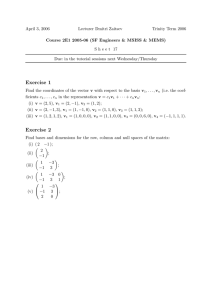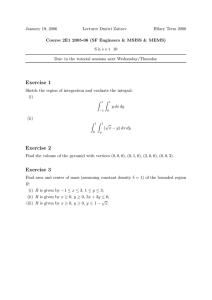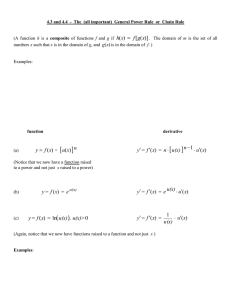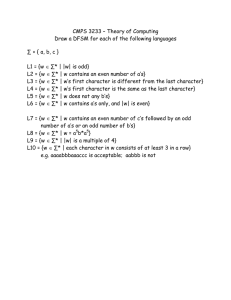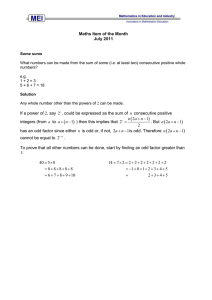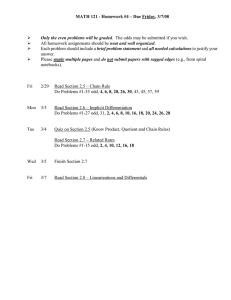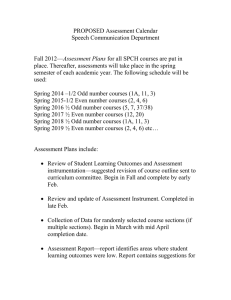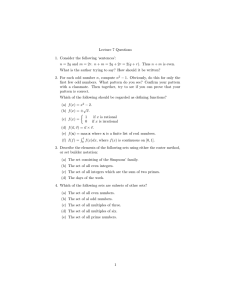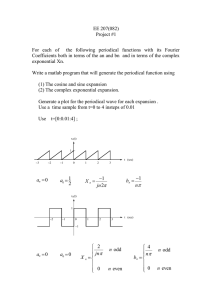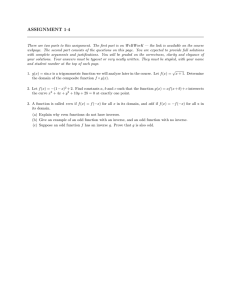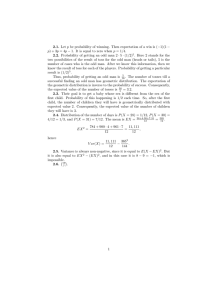May 2, 2007 Lecturer Dmitri Zaitsev Trinity Term 2007
advertisement
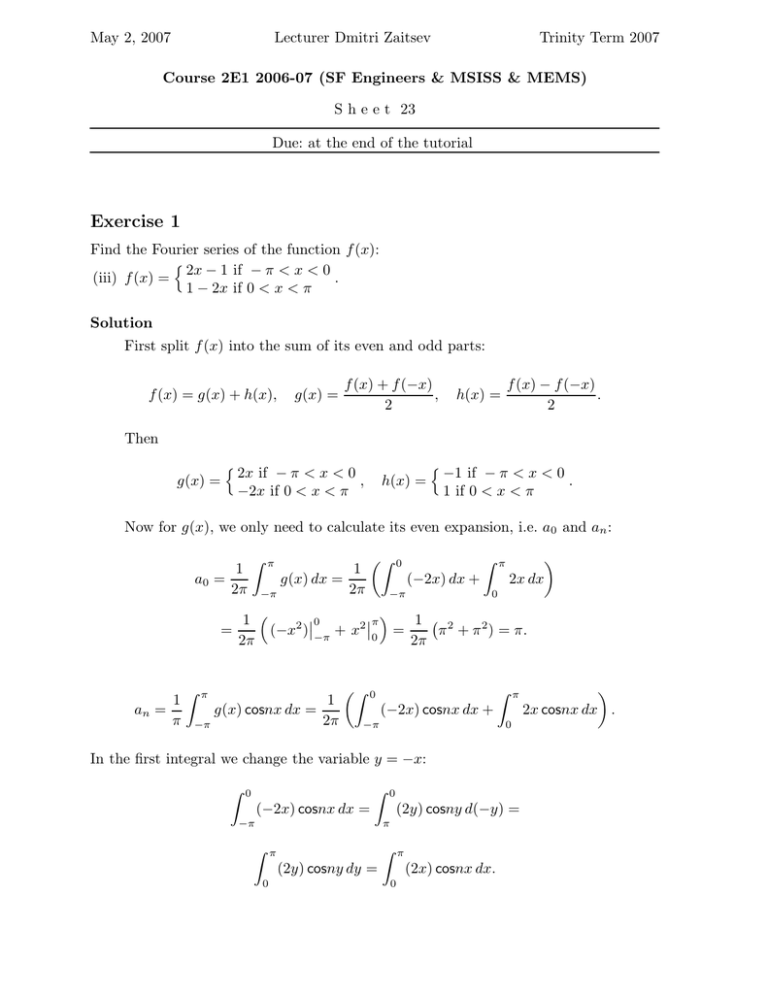
May 2, 2007 Lecturer Dmitri Zaitsev Trinity Term 2007 Course 2E1 2006-07 (SF Engineers & MSISS & MEMS) S h e e t 23 Due: at the end of the tutorial Exercise 1 Find the Fourier series of the function f (x): n 2x − 1 if − π < x < 0 (iii) f (x) = . 1 − 2x if 0 < x < π Solution First split f (x) into the sum of its even and odd parts: f (x) = g(x) + h(x), g(x) = f (x) + f (−x) , 2 h(x) = f (x) − f (−x) . 2 Then g(x) = n 2x if − π < x < 0 , −2x if 0 < x < π h(x) = n −1 if − π < x < 0 . 1 if 0 < x < π Now for g(x), we only need to calculate its even expansion, i.e. a0 and an : 1 a0 = 2π = 1 an = π Z 1 g(x) dx = 2π −π Z π 0 Z (−2x) dx + −π Z π 2x dx 0 π 0 1 1 (−x2 )−π + x2 0 = π 2 + π 2 ) = π. 2π 2π π 1 g(x) cosnx dx = 2π −π Z 0 (−2x) cosnx dx + −π Z π 2x cosnx dx . 0 In the first integral we change the variable y = −x: Z 0 (−2x) cosnx dx = −π Z Z π (2y) cosny dy = 0 0 (2y) cosny d(−y) = π Z 0 π (2x) cosnx dx. Then 1 2 an = 2π Z π 0 2 2x cosnx dx = π Z π x cosnx dx. 0 To integrate by parts, we write x cosnx = uv ′ with u = x and v ′ = cosnx, whence v = sinnnx . Then 2 an = π π (uv)|0 − Z π ′ u v dx 0 = 2 = π π Z π xsinnx sinnx 2 cosnx π dx = − n 0 n π n2 0 0 2(cosnπ − 1) 2((−1)n − 1) = . πn2 πn2 Finally, for the odd function h(x), we only have the odd expansion: 1 bn = π 1 h(x) sinnx dx = π −π Z π = Z 0 sinnx dx + −π Z π −sinnx dx 0 2 =− π Z π sinnx dx 0 2 cosnx π 2 (−1)n − 1 . = π n 0 π n To find the series for f we add those for g and h: a0 + ∞ X n=1 (an cosnx + bn sinnx) = π + ∞ X 2((−1)n − 1) n=1 πn2 2((−1)n − 1) cosnx + sinnx . πn
